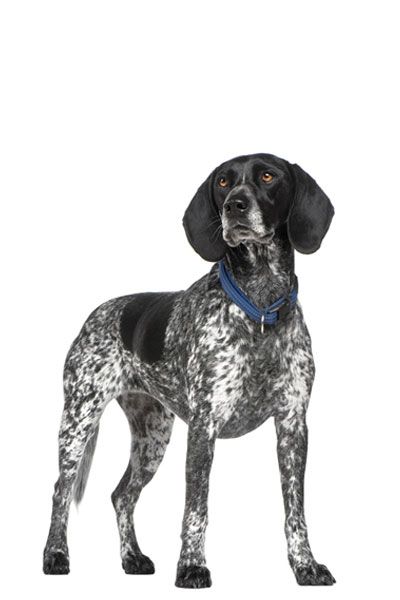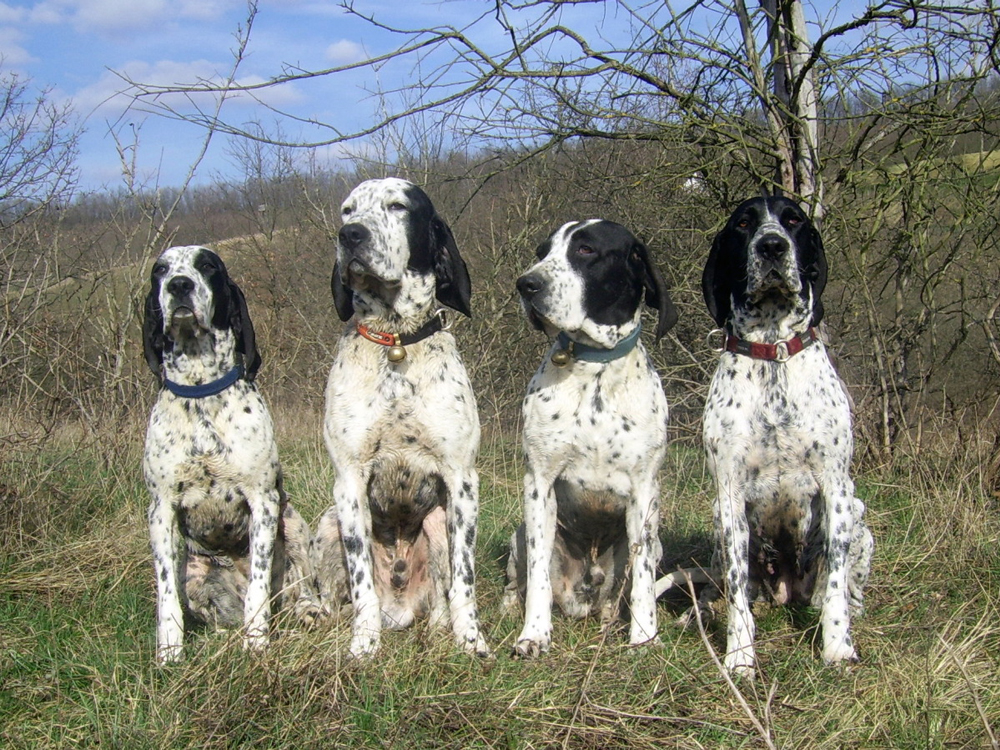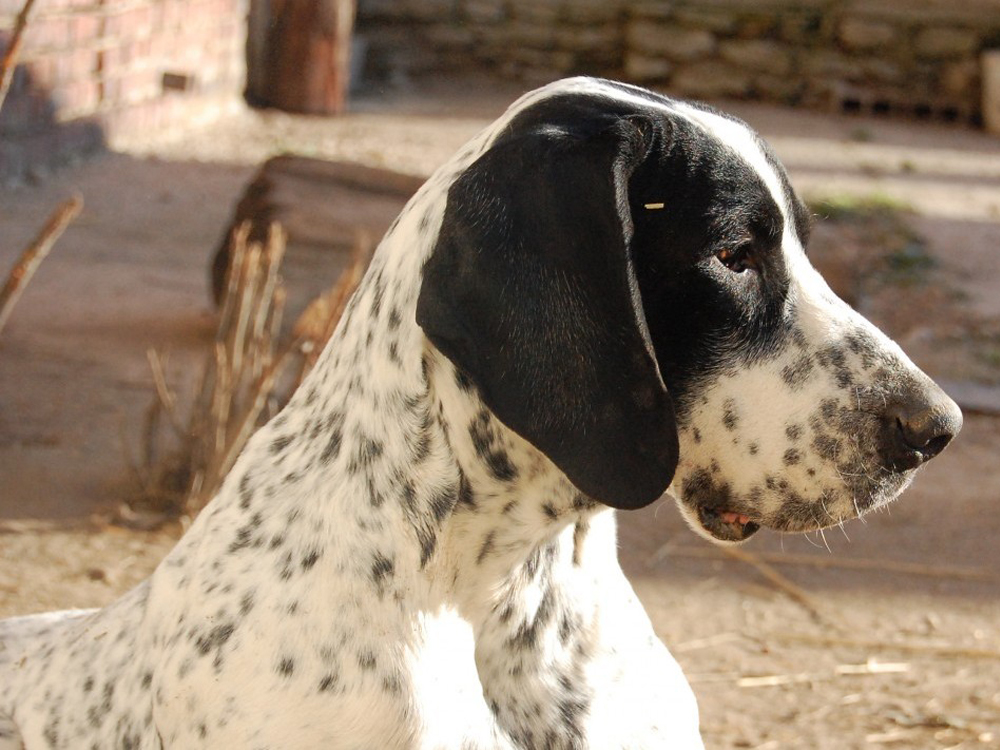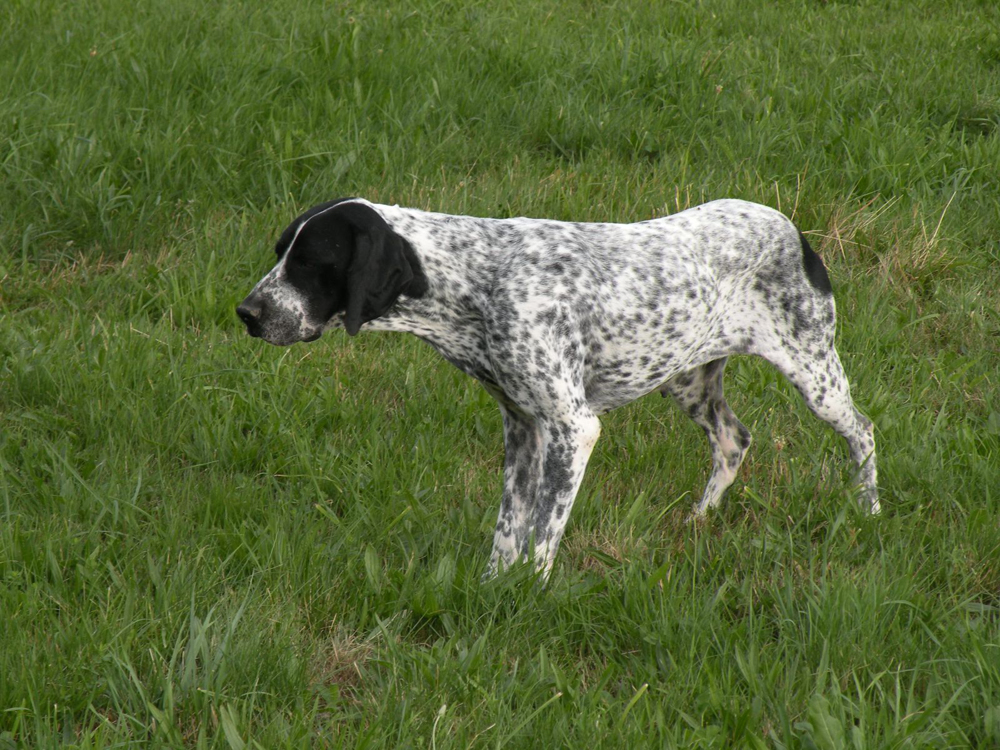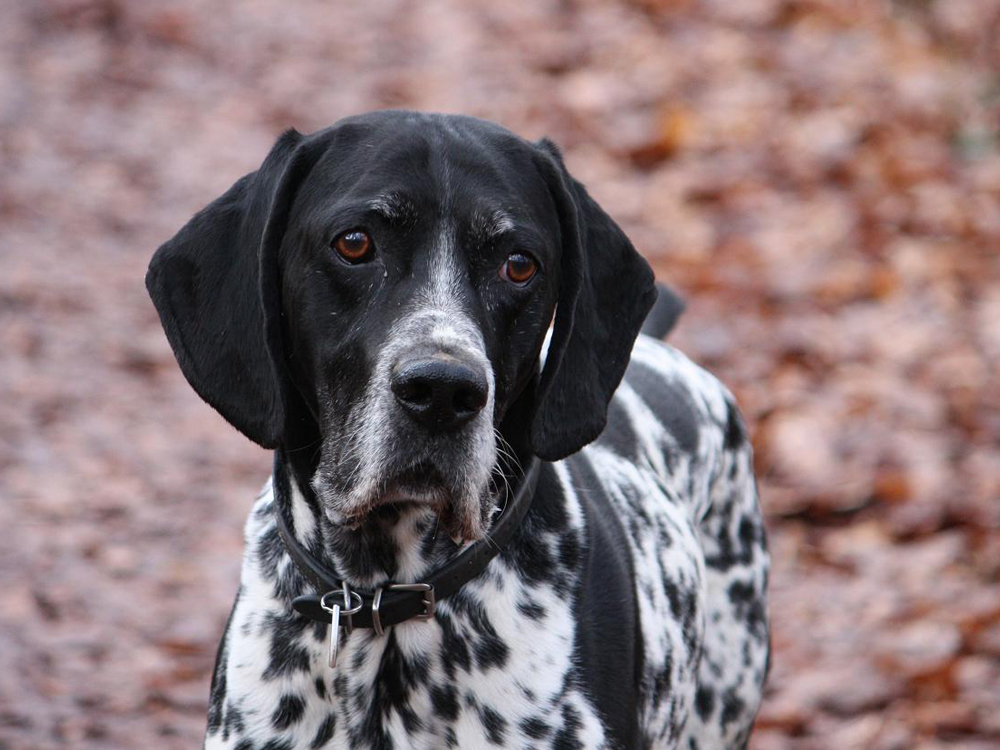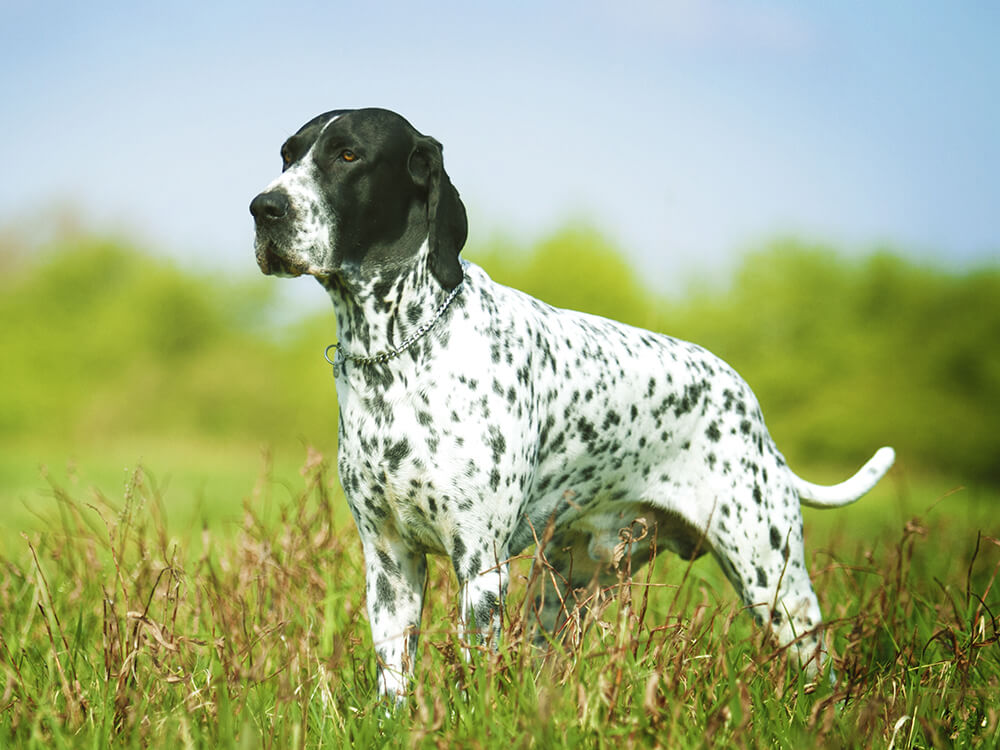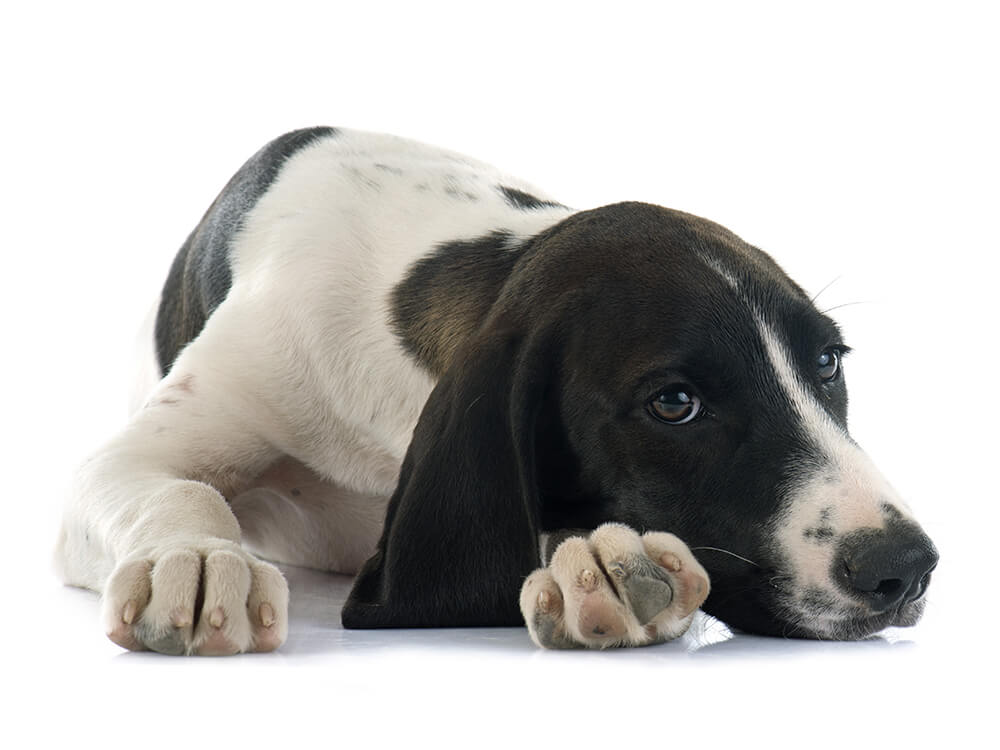
Braque D Auvergne Breed Pictures
Vital Breed Stats
| Height: | 55 - 65 cm M | 51 - 61 cm F |
| Weight: | 22 - 28 kg M | 22 - 28 kg F |
| Breed Group: | Gundog Dog Group |
| Life Expectancy: | 13 - 15 years |
| KC Registered: | No |
Breed Characteristics
| Size: |  |
| Grooming: |  |
| Exercise Level: |  |
| Trainability: |  |
| Barking Level: |  |
| Good with Children: |  |
| Good with other pets: |  |
| Affectionate: |  |
| Protective: |  |
| Cost to Keep: |  |
Give a thumbs up if you love the Braque D Auvergne

0
More About the Breed
History
The actual origin of the Braque d’Auvergne is unknown but it is believed to have originated in France as a hunting, pointing and retrieving dog. It said that the Knights of the Order of St. John brought the foundation stock to the Auvergne region from Malta in 1798. However, other people claim that the breed had already been around before that and been seen in different French regions. The breed standards for the Braque d’Auvergne were set in 1913.
As a versatile and dependable working dog in the field, the breed gained popularity outside its hometown in the 20s and 30s. However, its numbers significantly dropped during World War II. Good thing enthusiasts were able to save it from extinction. It remains a popular working and companion dog in France but it is still considered rare elsewhere, including in the UK. It has only been recognised by the Kennel Club in 2016 in the gundog group.
Appearance
The Braque d’Auvergne is a good-looking medium-sized breed that is robust and strongly boned. Compared to most pointing breeds, this athletic-looking dog is heavier in build with a slightly stronger head. It stands 53 to 63 centimetres at the withers and weighs 48 to 60 pounds. It has relatively large, oval, hazel eyes with a candid and kind expression. Its ears are set well back below eye level. It has strong jaws with a complete scissor bite. The length of its muscular body is slightly longer than the height at the withers.
The coat of the Braque d’Auvergne is short and glossy, and is never hard or too fine. According to KC standards, it comes in two recognised black-and-white patterns: tick or roan, which may contain some black patches. It should not be solid black or solid white or have tan markings.
Grooming
Because its coat is short and tight, grooming is quite easy. Occasional bathing and weekly brushing typically keeps things tidy and clean. Weekly wiping with a chamois cloth will also keep it glossy.
To keep your Braque d’Auvergne in tip-top shape, pay attention to other aspects of grooming. Never disregard your pet’s oral hygiene to avoid bad breath, bleeding gums and tooth loss. Start brushing its teeth as a puppy so it gets used to this routine process. Also make sure its ears are clean and dry to prevent infections. Its nails should regularly be clipped and skin inspected for spots and ticks.
Temperament
The Braque d’Auvergene is an affectionate and energetic dog that thrives on an active lifestyle. It is not for laid-back families in an apartment set-up. It needs a bigger living space it can freely move around and an access to a fenced yard or better yet a home in the countryside. It forms a strong bond with its one person, especially to the one who puts in the effort and takes care of it. This breed is not suitable for first-time owners because although it is good-natured, it needs proper training and handling by an experienced owner.
The Braque d’Auvergene loves children of any age but make sure to supervise interactions to avoid anybody from accidentally getting hurt. It cannot be left alone at home as its high energy and anxiety will make it destructive. It gets along with other pets but small animals like birds, rabbits and mice should be avoided because it has a very strong prey drive.
Intelligence
This breed is highly intelligent and trainable, and would gladly participate in challenging training sessions. Since it has a heightened sense of smell, it is prone to escaping. Owners need to teach strong recall commands for it to come quickly in any situation even though it has caught an interesting scent.
Breeds can have certain predisposed characteristics but your dog’s temperament and intelligence can also be influenced by genetics, environment, training, and socialisation. This means that you have the power to impact your Braque d’Auvergene’s character, starting with providing a loving and comfortable home.
Nutrition
- Senior and less active: up to 1,200 calories daily
- Typical adults: up to 1,300 calories daily
- Physically active/working dogs: up to 1,500 calories daily
Feeding
Health
Exercise
Cost of Ownership
The first question you need to ask yourself when considering a dog is “Can I afford it?” If you are interested in owning a Braque d’Auvergne, expect to be on a waiting list and pay more. As a rare breed outside France, it is the cost of a well-bred pedigree puppy does not go lower than £600. Insuring this dog will cost around £30 for basic coverage and £60 for lifetime policy per month.
Initial costs for basic equipment and supplies so your dog will live comfortably will be £200. Monthly expenses for food, treats and supplements will be £50 to £60. Above all, veterinary costs will always be part of dog ownership. Your pet dog needs to be spayed/neutered, routinely checked, vaccinated, and other basic treatments, which can set you back as much as £1,000 annually. This amount doesn’t even include major expenses when your dog has serious medical conditions that would require surgery or long-term treatments.
Is a Braque D Auvergne Right for You?
- The Braque d’Auvergne is a rare breed outside of France so interested individuals need to go on a waiting list.
- This breed is a popular companion because of its friendly and loving personality.
- It is not recommended for first-time dog owners.
- The Braque d’Auvergne has low grooming needs.
- It has strong prey drive and is prone to escaping.
- It forms a strong bond with the person that takes care of it.
